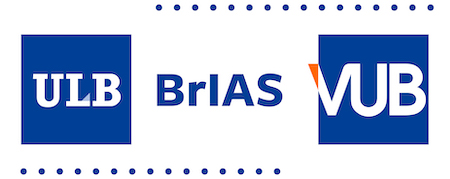1. Prof. Leonardo Cappello, Assistant Professor, Sant'Anna School of Advanced Studies, Pisa, Italy.
Title: " Transcending the paradigm of wearing a robot - The MusculoSkeletal Expansion"
People who suffer from severe muscle weakness of the (upper) limb following neurological disorders still struggle to find assistive technologies able to help them in their daily lives. The most advanced technologies consist of wearable exoskeletons, either rigid or soft, that promise to support the wearer during daily living. Despite their great potential, the widespread adoption of exoskeletons where they are most needed – i.e., for continuous daily home assistance – is prevented by several flaws: limited efficiency, controllability, and lack of reliable ways to connect them to the user. With my project MUSE (MusculoSkeletal Expansion) I aim to abandon the paradigm of wearing an exoskeleton to develop and clinically assess soft external muscles (exomuscles) intimately connected and naturally controlled by the user. The core objective is to develop innovative efficient exomuscles to support people with severe muscle weakness. They will be developed by combining the extreme portability of pneumatic actuators made of textiles with the energy efficiency and promptness of non-linear elastic structures. They will be reliably connected to the user through fixtures implanted on the bones, which will grant the excellent mechanical stability of osseointegration, widely adopted in dental prosthetics and increasingly explored in limb prosthetics, but still unexplored in exoskeletons. This approach will unlock the potential of eliciting osseoperception, i.e., sensory feedback – necessary to control motion – through bone conduction. MUSE will benefit all those in need of sensorimotor augmentation, as it can be extended to all kinds of exoskeletons (from upper to lower limbs, from assistive to augmenting devices).
2. Zemerart Asani, PhD Researcher; Brubotics/VUB - SAAS/ULB
Title: "Cooperative control of two robotic agents with complementary capabilities for heavy construction tasks"
Multi-agent robotic systems are advantageous when advanced mobility and load capabilities for operation in confined spaces are required, such as in construction when building walls. These systems can perform tasks that single robots cannot. In line with this trend, this talk focuses on a heterogenous multi-agent robotic system consisting of agents with complementary capabilities. This multi-agent system is composed of a crane and a mobile manipulator that together combine their strengths to move precisely heavy objects on construction sites. To achieve this difficult task, the control strategy must ensure that the object is correctly moved while also preventing the robot arm from being overloaded, given that it is moving an object heavier than its maximal payload. In this talk, we will showcase the theoretical and experimental findings that have emerged from the two projects, BrickieBots 1.0 and BrickieBots 2.0.
For the teams link, or in-person participation, registration is required. Coffee and tea will be served.
This Seminar will also be livestreamed on our Youtube channel @BrIAStalks
Location:
ULB Solbosch Campus
Department of Control Engineering and System Analysis (SAAS)
Brussels School of Engineering
Building L second floor, door E
